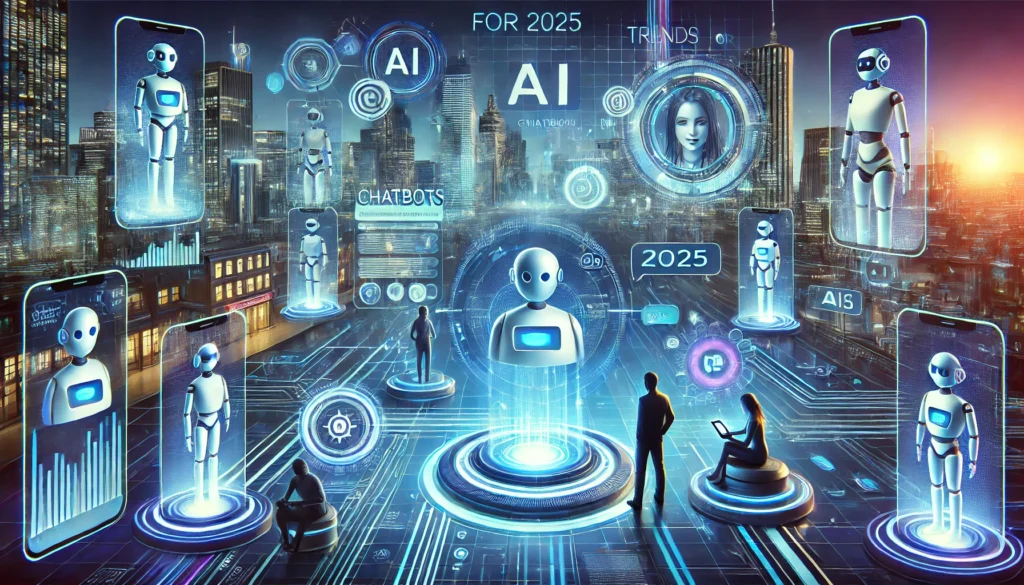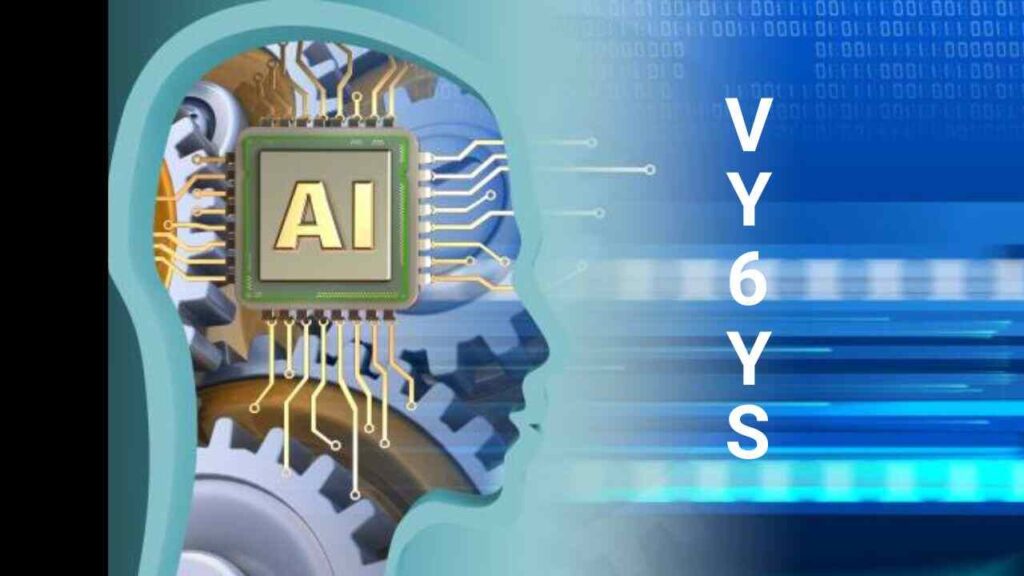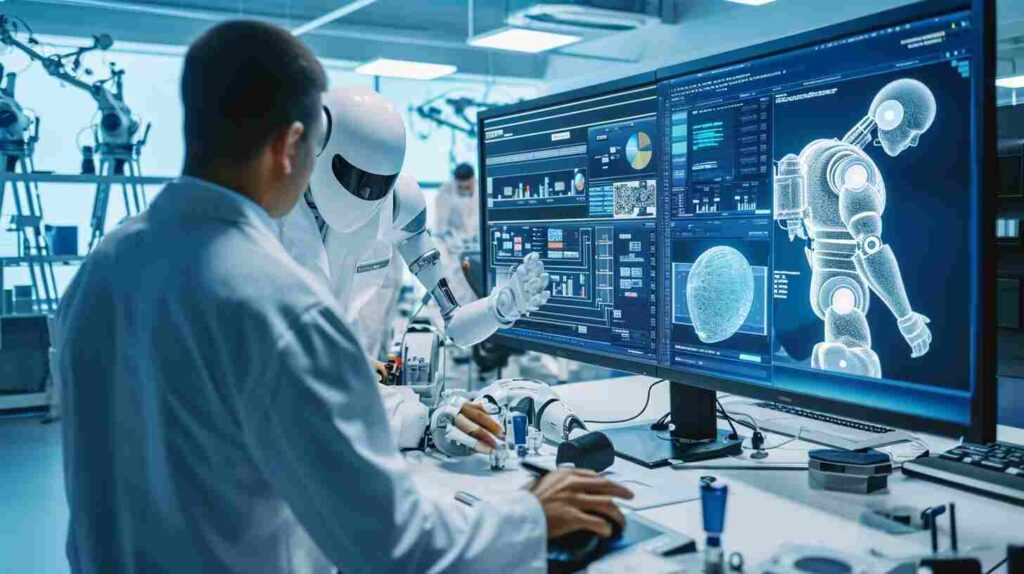
The Future of AI Chatbots: Trends to Watch in 2025
As technology speeds forward, AI chatbots are evolving at a pace that’s nothing short of amazing. By 2025, these AI-powered assistants are expected to transform every corner of our lives—from personalized customer service to proactive assistance in healthcare, education, and beyond. Understanding these changes will prepare businesses and individuals for what lies ahead, making interactions more intuitive, responsive, and tailored.
AI chatbots are becoming more advanced, and their potential is expanding rapidly. A key part of this evolution is driven by innovative projects like “VY6YS,” which focuses on shaping technology and design for a better future. By merging smart technology with user-centered design, VY6YS offers a new approach that helps AI chatbots become more intuitive, human-like, and responsive. This synergy between AI and design thinking means that future chatbots won’t just be tools; they’ll feel like genuine conversational partners.
With this technology, AI chatbots will not only handle tasks more effectively but also adapt to users’ needs in a smoother, more personalized way, creating an experience that feels both natural and supportive. As AI and design continue to intertwine, projects like VY6YS are paving the way for chatbots that are not just functional but also enjoyable to interact with, marking a new era in digital communication.
In this article, we’ll explore key trends that define “The Future of AI Chatbots: Trends to Watch in 2025″, covering everything from emotional intelligence to blockchain security. If you’re a business owner or tech enthusiast looking to leverage this technology, these insights will help you make confident, informed decisions.
1. Personalization with AI Chatbots
The idea of personalization has come a long way. By 2025, AI chatbots won’t just know your name—they’ll understand your preferences, interests, and even anticipate your needs. Advanced algorithms will analyze your behaviors, past interactions, and online patterns to tailor interactions with impressive precision.
Imagine booking a vacation. Instead of scrolling through endless travel websites, an AI chatbot could suggest destinations that match your previous travels, hobbies, and budget. Or think about shopping—your chatbot could recommend products that fit your style and remind you when items go on sale. This kind of personalization will redefine customer experience and increase engagement in every industry.
Anecdote: Think of an AI chatbot as a friend who knows your coffee order and has it ready the moment you arrive. Personalization is the digital equivalent of that kind of attentive service, making users feel valued and understood.
2. Emotional Intelligence: Chatbots That “Get” You
Chatbots will soon understand not only what you’re saying but how you’re feeling. By 2025, emotional intelligence in AI will allow chatbots to pick up on subtle emotional cues, like frustration or happiness, to respond accordingly. Sentiment analysis will empower chatbots to detect changes in tone, helping them to engage more empathetically.
In customer service, for instance, chatbots will recognize when a customer is upset and respond with empathy, offering quick solutions or an apology if needed. In healthcare, emotionally intelligent chatbots will support patients by understanding their mental state, providing encouragement, or connecting them with resources during challenging times.
Anecdote: Imagine dealing with an issue and, just as you’re about to give up, the chatbot offers a sympathetic response like, “It sounds like this has been frustrating. Let me make it right for you.” A small change, but one that can make a huge difference in the customer experience.
3. AI-Driven Insights and Analytics
AI chatbots will be more than just conversational tools; they’ll become data-driven analysts. Through AI-driven insights, businesses will gain actionable information about customer preferences, product feedback, and common inquiries. This data will be invaluable in helping companies enhance their services and products.
For example, if a significant number of customers ask about a particular feature, the chatbot could identify this as a trend, helping the business adapt its offerings. This data feedback loop allows companies to make improvements based on real-time customer interactions, leading to better customer satisfaction and loyalty.
Tip: Integrating chatbots into your analytics strategy can provide insights that may otherwise go unnoticed, helping you stay ahead of competitors and better serve your customers.
4. Independent Decision-Making: More Autonomy for Chatbots
By 2025, AI chatbots will be capable of independent decision-making. Gone are the days when a chatbot needed human intervention to process complex requests. Instead, these advanced bots will handle tasks like issuing refunds, managing account settings, or even troubleshooting technical issues all on their own.
In healthcare, a chatbot could triage a patient’s symptoms and recommend a course of action, alerting medical professionals only when necessary. In finance, chatbots will assist with routine transactions, such as processing payments, managing accounts, and detecting fraudulent activities. For industries that thrive on efficiency, this autonomous capability will be a game-changer.
Example: Imagine your chatbot automatically rescheduling a missed appointment and sending you the new date without you lifting a finger. This level of autonomy will simplify interactions and save valuable time for both businesses and customers.
5. Multimodal Interaction: Beyond Just Text
As we move toward 2025, chatbots are expected to support multimodal interactions, allowing users to communicate not only through text but also by voice, gestures, and even facial expressions. This combination will create a more natural and intuitive experience across devices and environments.
For instance, in a smart home, you’ll be able to control your environment with a simple command or gesture, whether it’s adjusting the thermostat or turning off lights. In customer service, a chatbot on a video call could analyze facial cues to gauge satisfaction or frustration, enabling even better responses.
Tip: Multimodal interactions will make AI chatbots more accessible and engaging, meeting users where they are—whether they prefer typing, talking, or tapping.
6. Blockchain Integration for Enhanced Security
One of the biggest hurdles for AI chatbots is data security. To address this, blockchain technology will likely be integrated with chatbots, offering secure and transparent transactions. Blockchain provides an immutable record of transactions, ensuring that sensitive data remains tamper-proof and accessible only to authorized parties.
In finance, blockchain-secured chatbots will facilitate secure transactions, reducing fraud risk and protecting user data. Similarly, in healthcare, patient records managed through blockchain will ensure only approved parties have access, improving both privacy and accountability.
Example: Think of blockchain like a digital safe. It not only protects your valuables but also provides a record of every interaction. This integration with chatbots will foster trust and encourage wider adoption across industries.
7. Advanced Virtual Assistants: Your Personal Digital Butler
By 2025, virtual assistants will evolve into comprehensive, AI-driven hubs capable of managing both personal and professional aspects of your life. These assistants will handle everything from reminding you of upcoming meetings to brewing your coffee, acting as central hubs for managing daily tasks and schedules.
In work environments, virtual assistants will streamline project management, keeping you informed on deadlines, prioritizing tasks, and even coordinating with colleagues. For personal needs, these assistants will control home devices, manage grocery lists, and provide reminders—empowering you to focus on what truly matters.
Example: Imagine a virtual assistant that prepares a full morning briefing as you wake up: weather updates, traffic conditions, and a reminder for your presentation. With this kind of support, you’ll start every day one step ahead.
8. Proactive Assistance: Meeting Needs Before They Arise
AI chatbots will become more proactive, anticipating your needs and offering solutions even before you ask. A proactive chatbot might remind you of an upcoming deadline, suggest a meeting time, or recommend a product you’ve been searching for based on previous interactions.
For instance, if you regularly buy groceries, your chatbot could notify you when it’s time to restock or even suggest recipes based on your pantry items. Proactive assistance will also prove valuable in work settings, as chatbots monitor your workflow, helping you stay organized and productive.
Anecdote: Think of proactive chatbots as that friend who remembers everything on your to-do list—even things you forgot—and gives you a gentle nudge just when you need it.
9. Enhanced Collaboration with Humans: AI as a Co-Pilot
By 2025, AI chatbots won’t just be tools—they’ll become collaborative co-pilots. In the workplace, these chatbots will work alongside employees, assisting with data analysis, answering routine questions, and offering insights that enhance decision-making.
In marketing, a chatbot could monitor campaign performance, suggesting tweaks for optimal engagement. In customer service, they’ll handle routine inquiries and hand over complex cases to human agents. This blend of human-AI collaboration will make workplaces more efficient and boost employee satisfaction by freeing them from repetitive tasks.
Tip: When used as a team member, an AI chatbot can relieve you of time-consuming tasks, letting you focus on what only you can do best.
10. Environmental Sustainability: AI Chatbots for a Greener Future
AI chatbots will play a critical role in promoting environmental sustainability. By optimizing resource use and reducing waste, these chatbots will help businesses implement eco-friendly practices while also educating consumers about sustainable choices.
In logistics, for example, chatbots will streamline supply chain processes, minimizing emissions by suggesting the most efficient routes. For consumers, chatbots can recommend eco-friendly products, encourage sustainable behaviors, and even track users’ carbon footprint.
Example: Imagine an AI-powered assistant that helps you track and reduce your energy usage, suggesting small changes with significant environmental impact. These chatbots won’t just be tools—they’ll be allies in building a sustainable future.
11. Ethical AI and Bias Mitigation: Building Trustworthy Systems
With increasing reliance on AI chatbots, ensuring ethical AI usage will be paramount. By 2025, chatbots will be designed to operate without bias, offering fair treatment to all users. Businesses will prioritize transparency, regularly audit AI interactions, and ensure users have control over their data.
For instance, hiring chatbots will assess candidates based solely on qualifications, while customer service bots will treat every query with equal fairness. As a result, this focus on ethics will build trust, making users more comfortable with AI-assisted interactions.
Tip: Prioritizing ethical AI practices is more than a trend; it’s an essential step toward creating a trustworthy digital landscape.
Final Thoughts: Embracing the Future of AI Chatbots
Looking ahead to 2025, the future of AI chatbots is promising, packed with advancements that will enhance our daily experiences, whether personal or professional. As these smart assistants become more proactive, emotionally intelligent, and secure, they’ll reshape industries and create opportunities for businesses and consumers alike.
With the future of AI chatbots on the horizon, consider how they can enhance your business. By starting today, you’ll be well-positioned to leverage these advancements, from personalized customer interactions to improved operational efficiency.



